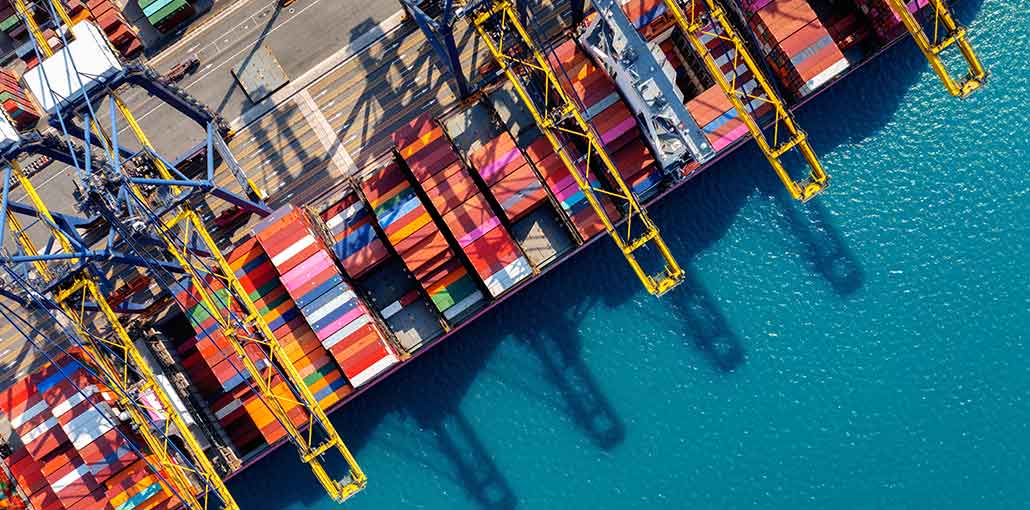The world of global trade is a bustling, vibrant marketplace. At the heart of this marketplace, you’ll find freight forwarding, a key player (and unsung hero) that’s been around for centuries. But now, it’s getting a digital makeover. This article takes you on a journey through the world of freight forwarding, its rich tapestry of history, the hurdles it faces, and the game-changing role of online freight forwarding in boosting supply chain visibility in the modern age.
Understanding Freight Forwarding
Freight forwarding is a service utilized by companies involved in international or multinational import and export. The freight forwarder doesn’t move the freight themselves; instead, they act as intermediaries between the client and various transportation services. They negotiate the best possible price to move the goods along the most economical route, working out various bids and choosing the one that best balances speed, cost, and reliability.
History of Freight Forwarding
The freight forwarding industry boasts a rich and diverse history, tracing its roots back to the 19th century. Initially, freight forwarders were responsible for arranging the transport of goods by rail. As trade routes expanded and air and sea transport gained popularity, their role morphed to include international shipping. The industry has consistently adapted to shifts in global commerce, regulations, and technology.
The 20th century brought about containerization, a revolutionary development that made transporting goods more efficient and secure. As the world grew more interconnected and globalization really started to take center stage in the last 20th and early 21st centuries, the role of freight forwarders became even more integral as they broke down barriers and helped to facilitate more streamlined international trade.
Also read: Freight Broker vs. Freight Forwarder: Is There a Difference?
Challenges in Freight Forwarding
Despite its evolution, the freight forwarding industry faces several challenges:
- Complexity of Processes: Freight forwarding involves multiple parties, regulations, and processes. Managing the logistics of international shipping can be a complex task, requiring expertise in customs procedures, documentation, and international regulations.
- Lack of Transparency: Traditional freight forwarding often lacks transparency. Clients may find it difficult to track their shipments and may not have a clear understanding of the various costs involved, leading to uncertainty and potential disputes.
- Inefficiency: Manual processes and paperwork can slow things down and lead to errors. Depending on old-school communication methods like telephone, fax, and emails can also be a bottleneck.
- Vulnerability to External Factors: Freight forwarding is highly susceptible to external factors like political instability, environmental disasters, and fluctuations in fuel prices. These unpredictable elements can disrupt schedules and inflate costs, making it harder to provide reliable, cost-effective service.
The Concept of Supply Chain Visibility
Supply chain visibility is a term that signifies the capacity of all stakeholders within a supply chain to access real-time, transparent information about the location and status of their goods from the point of origin to the final destination. This concept goes beyond mere tracking; it encompasses a comprehensive understanding of all the operations within the supply chain.
In essence, supply chain visibility involves tracking the product from the manufacturer to its final destination, and it provides valuable information that companies can use to make informed decisions. However, in today’s interconnected world, where supply chains often span multiple countries and continents, achieving full supply chain visibility is a particularly daunting task. But with the rise of new technologies and digital freight forwarding platforms, it’s becoming more and more achievable.
Online Freight Forwarding: A Solution
Online freight forwarding platforms are leveraging technology to address traditional challenges and enhance supply chain visibility. Here’s how:
Real-Time Tracking
These digital platforms are like GPS for your shipments, offering real-time tracking that lets clients know where their goods are at any given moment. This visibility reduces uncertainties and enables better planning and decision-making. It also enhances customer service, as clients can provide their customers with precise and timely information about their shipments.
Also read: 10 Ways Production Tracking Software Can Prevent Supply Chain Delays
Data Analytics
These platforms gather and analyze vast amounts of data, offering insights that can help optimize routes, cut costs, and boost efficiency. Predictive analytics can also help foresee and mitigate potential disruptions in the supply chain. For instance, data on weather patterns can be used to predict potential delays and reroute shipments accordingly.
Integration with Other Systems
Digital freight forwarders can integrate with other systems such as warehouse management and customer relationship management. This integration offers a more holistic view of the supply chain, further enhancing visibility. For instance, integration with a warehouse management system can provide real-time information on inventory levels, while integration with a customer relationship management system can offer insights into customer demand patterns.
Automation
By automating manual processes, online freight forwarding platforms can reduce errors, save time, and increase efficiency. Automation also allows for more accurate and timely information, contributing to improved visibility. For instance, automated document generation and processing can significantly speed up customs clearance, reducing the risk of delays.
Final Word: The Future of Freight Forwarding
With technology always evolving, we can expect further developments in freight forwarding that will make it more efficient, transparent, and customer-focused. Blockchain, artificial intelligence, and the Internet of Things (IoT), for example, all have the potential to significantly transform the sector
By utilizing blockchain technology, transactions can be securely and transparently recorded, leading to a more streamlined supply chain. Artificial intelligence can assist with data analysis and decision-making processes, while the IoT can enhance real-time tracking capabilities through sensor-based information on the location and condition of goods in transit.
The end result? A more efficient, sustainable, and interconnected global marketplace than ever before.










Leave a comment